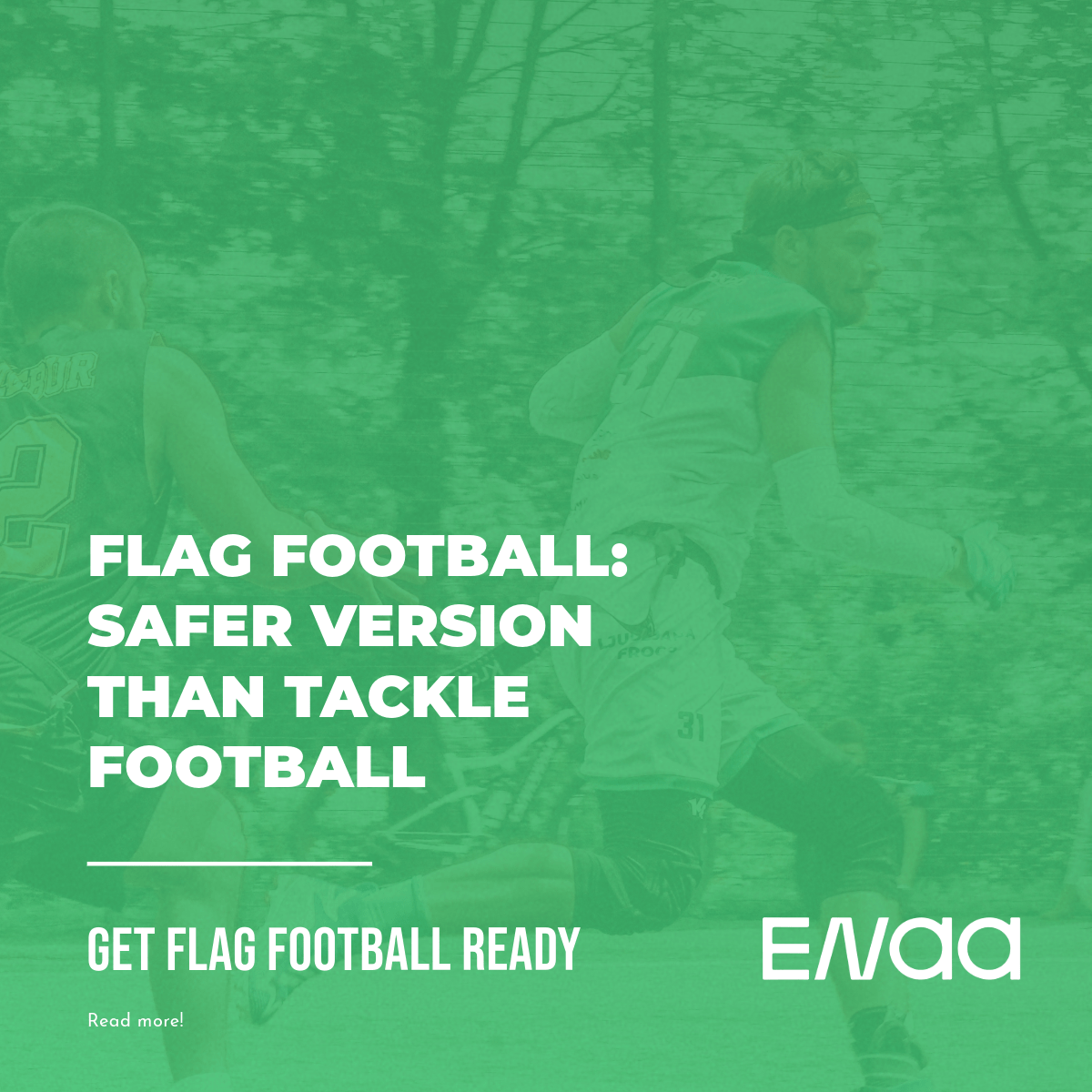
Flag Football 5-on-5: A Safer Alternative to Tackle Football
Safety Advantages of Flag Football
Reduced Physical Contact
The primary reason flag football is safer than tackle football is the significant reduction in physical contact. In flag football, players wear flags attached to their waists, and instead of tackling, defenders remove these flags to stop the ball carrier's progress1
. This fundamental difference eliminates the high-impact collisions that are common in tackle football.Lower Risk of Head Injuries
Studies have shown that youth tackle football athletes sustain approximately 15 times more head impacts than flag football athletes during practices and games7
8
. This dramatic difference in head impact exposure significantly reduces the risk of concussions and other traumatic brain injuries in flag football.Fewer High-Magnitude Impacts
Research indicates that tackle football athletes experience about 23 times more high-magnitude head impacts compared to flag football athletes8
. These hard head impacts are particularly concerning as they increase the risk of serious head injuries.Accessible to All Body Types
Flag football's emphasis on speed, agility, and strategy rather than physical size and strength makes it more inclusive for players of various body types9
. This reduces the risk of injuries that can occur when players of significantly different sizes collide.Key Rule Differences
No-Contact Rule
The most significant rule difference is the strict no-contact policy in flag football. Tackling, diving, blocking, and screening are not allowed3
. This rule fundamentally changes the nature of the game, making it safer and more focused on skill and strategy.Player Count and Field Size
Flag football 5-on-5 is played with fewer players on a smaller field compared to tackle football. The field is typically 30 yards wide and 70 yards long, with two 10-yard end zones3
. This reduced field size and player count contribute to a faster-paced game with less potential for high-speed collisions.Gameplay Modifications
Several rules in flag football are designed to minimize physical contact:- No Running Zones: These are areas near the goal lines where teams must pass the ball, preventing power plays in tight spaces.
- Quarterback Restrictions: Quarterbacks cannot run with the ball unless it has been handed off first.
- Dead Ball Rules: The play is immediately dead when the ball hits the ground, eliminating fumbles and reducing scrambles for loose balls.
- Limited Rushing: Only players lined up at least 7 yards from the line of scrimmage can rush the quarterback.
Key Differences Between IFAF Flag Football Rules and NFL Tackle Football
| Aspect | Flag Football (IFAF) | Tackle Football (NFL) |
|---|---|---|
| Field Dimensions | 25 x 70 yards with two 10-yard end zones 1 5 | 53 x 100 yards with two 10-yard end zones 2 8 |
| Downs | 4 downs to reach midfield, then 4 more to score 5 | 4 downs to advance at least 10 yards 8 |
| No-Run Zones | Within 5 yards of the end zone or midfield 1 5 | No restrictions on running plays near the end zone 8 |
| Game Duration | Two halves of 20 minutes with a stop clock in the last 2 minutes 1 | Four quarters of 15 minutes each with frequent clock stoppages 8 |
| Contact Rules | Strictly no contact: no tackling, blocking, or screening 3 7 | Full-contact sport with tackling allowed 8 |
| Play Style | Passing-focused; quarterbacks cannot run unless handed off first 7 | Both running and passing plays allowed freely 8 |
| Turnover Rules | Interceptions result in immediate possession at the spot 7 | Interceptions allow for returns until tackled or out of bounds 8 |

